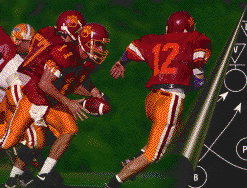 Methodology
Methodology 
Using the Data.My method for completing this project was a top down design. I wished to get a ranked order of good city locations for the NFL. I would look at whether or not the NFL should expand to 32 teams or move one of the teams that is not doing well financially teams to a new location. Working down I quickly focused on the money sources that a team has, which I have broken down into two categorize TV and Stadium audience.I created as many contributing factors as I could that would be economic indicators of whether a team would be finacially viable and the degree of success. Breaking down the list into the factors used in the MCE and giving more criteria factors based on what I felt was the economic importance. So instead of weighting factors with the Idrisi weight modual I inherently weighted by creating more factors in important areas. This allowed me to create a scale as oposed to a simple boolean criteria. To create the factors used in the MCE I used some basic assumptions stated such as attendance is most likely to come from 20 - 40 year olds so they must be present within 200 km. The US census data was vital after converting it from vector format. |
Basis of Important Factors to the Model
The 30 major league baseball teams had an operating profit of $75
million last season according to a study by Forbes Magazine, about $300
million more than commissioner Bud Selig testified to Congress in December. |
Facts, Numbers and AssumptionsA team has two main sources of revenue TV Audience and Stadium AttendanceFans are most likely to be drawn to the nearest team The StadiumStadium attendance is highest in the 20 - 40 year old (NFL.COM)Males attend more games (NFL.COM) Stadium attendance is from a population within 200 km radius (how far you can drive on a Sunday) Other nearby NFL teams nearby will divide the fan base Other Leagues will remove cash from your fan base Stadiums have an average capacity of 70 000 people. It should be filled for most games (density is important) State boundaries will hinder fan support TV AudienceMore diverse audience watches games (population of county)Fan base often extends to the entire state Neighbor states without teams can become fans Other professional Leagues do not interfere with your television audience as much as the stadium attendance The GDP of the state comes into play as to how much merchandising is possible |
| Home | Introduction | Data sources
|
Methodology
|
Cartographic Model | Conclusion |